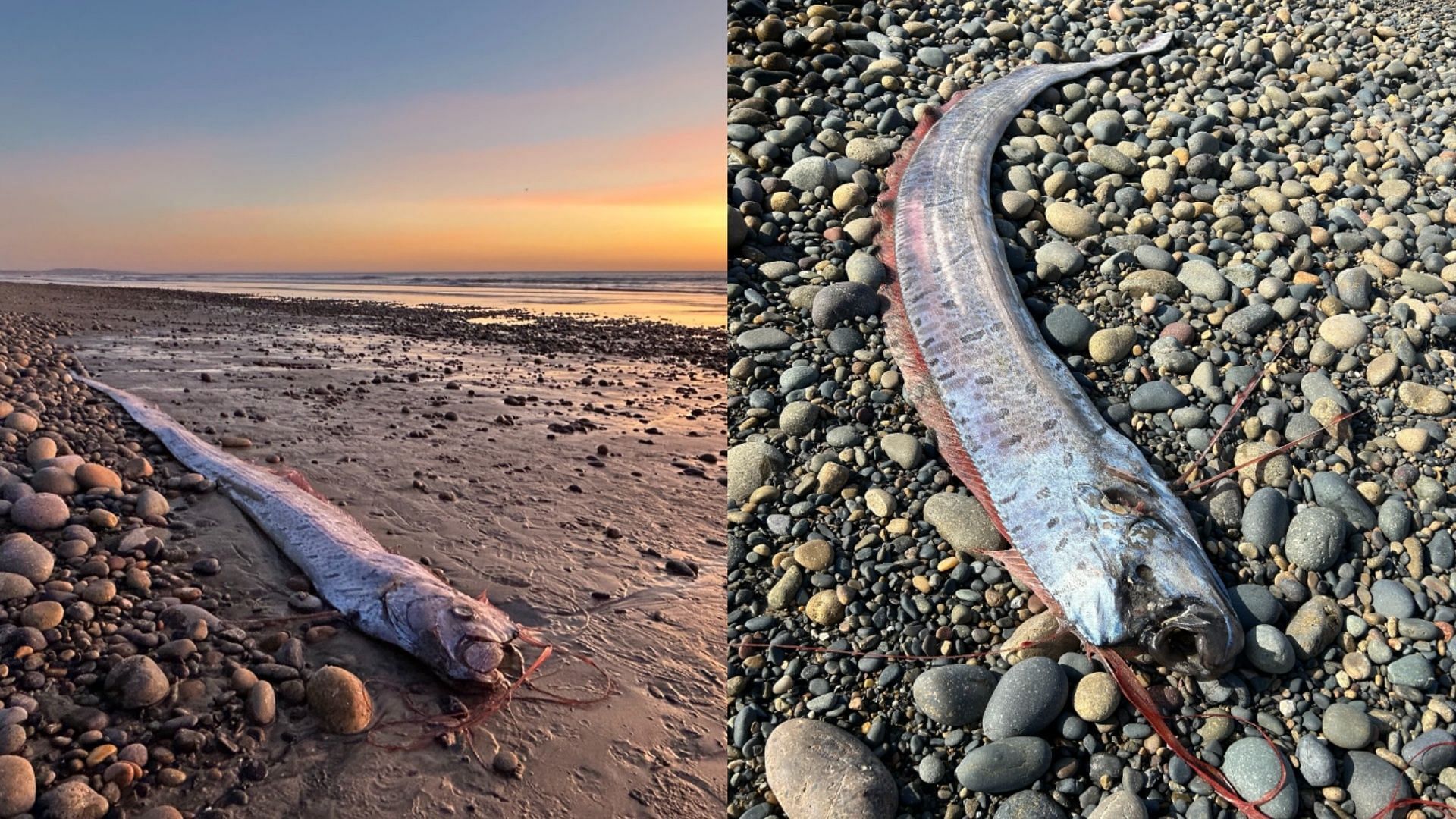
What does a “doomsday fish” symbolize? Omen washes ashore in Southern California in the third spotting of the year
On November 6, a rare oarfish, now being dubbed as “doomsday fish,” was discovered dead along the coast of Southern California, marking the third spotting this year.
The 9 to 10-foot dead oarfish washed up the shore at Grandview Beach in Encinitas, 25 miles north of San Diego. It was sighted by Alison Laferriere, a doctoral student at the Scripps Institution of Oceanography, and was later transported to the Southwest Fisheries Science Center by the NOAA Fisheries Services.
According to Japanese folklore dating back to the 17th century, sightings of oarfish or the “doomsday fish” in shallow waters symbolize an omen of impending doom, most commonly an earthquake. These fish can grow up to 30 feet.
Meanwhile, scientists have theorized that the “doomsday fish” sightings were a result of a rise in the number of oarfish off the Southern Californian coast as well as changes in oceanic conditions.
Exploring further about the latest “doomsday fish” sighting
According to the Scripps Institution of Oceanography, it remains unclear how and why the deep-sea creatures that live 700 to 3280 feet below the sea surface and rarely come up, have been washing ashore in Southern California lately. However, in-house expert Ben Frable shared a social media statement in this regard about their analysis.
“It may have to do with changes in ocean conditions and increased numbers of oarfish off our coast. Many researchers have suggested this as to why deep-water fish strand on beaches… This wash-up coincided with the recent red tide and Santa Ana winds last week but many variables could lead to these strandings.”
While the cause of death is awaited and will be determined after a necropsy, the specimen will later be preserved for future research, as part of the Scripps’ Marine Vertebrae Collection.
“We took samples and froze the specimen awaiting further study and final preservation in the Marine Vertebrate Collection. This specimen and the samples taken from it will be able to tell us much about the biology, anatomy, genomics, and life history of oarfishes,” Frable wrote.
He also mentioned how the oarfish sightings have given them a rare opportunity to learn more about the species, such as their movements (often called ‘strandings’) and how they were influenced by climate patterns such as El Nino and La Nina. The expert also shared how oarfishes generally come up to the surface when they are sick, dying, or disoriented.
Meanwhile, as per Japanese folklore, the “doomsday fish” once belonged to the servants of the sea god Ryujin and was called “ryugy no tsukai” which in English means, “messenger from the sea god’s palace.” As per Ocean Conservancy, oarfish got its name because of its long, ribbon-shaped features, resembling mythical sea creatures.
The last two sightings of “doomsday fish” in Southern California happened in August and September of this year
In August 2024, a 12-foot oarfish washed up the shore at La Jolla Cove in San Diego. However, it was found alive and later rescued by a group of kayakers and snorkelers swimming in the region.
The following month, another oarfish was found, this time dead, at the Huntington Beach in Orange County. Notably, only 25 of these “incredibly rare” deep-sea fishes have been spotted in Southern California in more than a century. However, out of them, three happened this year alone.
Meanwhile, the “doomsday fish” was also spotted over the years in places such as Japan. In 2011, multiple of them were spotted ahead of the Tohoku earthquake and Fukushima nuclear disaster. However, Kagoshima University's professor of ichthyology (study of fishes) Hiroyuki Motomura told the New York Post last year that the two events were unrelated and had nothing to do with the oarfish sightings.
“There is no scientific evidence of a connection, so I don’t think people need to worry. I believe these fish tend to rise to the surface when their physical condition is poor, rising on water currents, which is why they are so often dead when they are found,” he shared.
Likewise, in a comment on their Facebook post regarding the recent sighting, Scripps Institution of Oceanography clarified the myth surrounding “doomsday fish.”
"There have been many questions and comments about the connection between oarfish and earthquakes. While oarfish have a mythical reputation as predictors of natural disasters and earthquakes, experts have debunked this as folklore. A 2019 study found no correlation between oarfish or ribbonfish strandings and earthquakes in Japan," it read.
It was a reference to a study published in the Bulletin of the Seismological Society of America five years back. Maine, New Jersey, and Taiwan have also reported similar sightings of "doomsday fish" over the years.